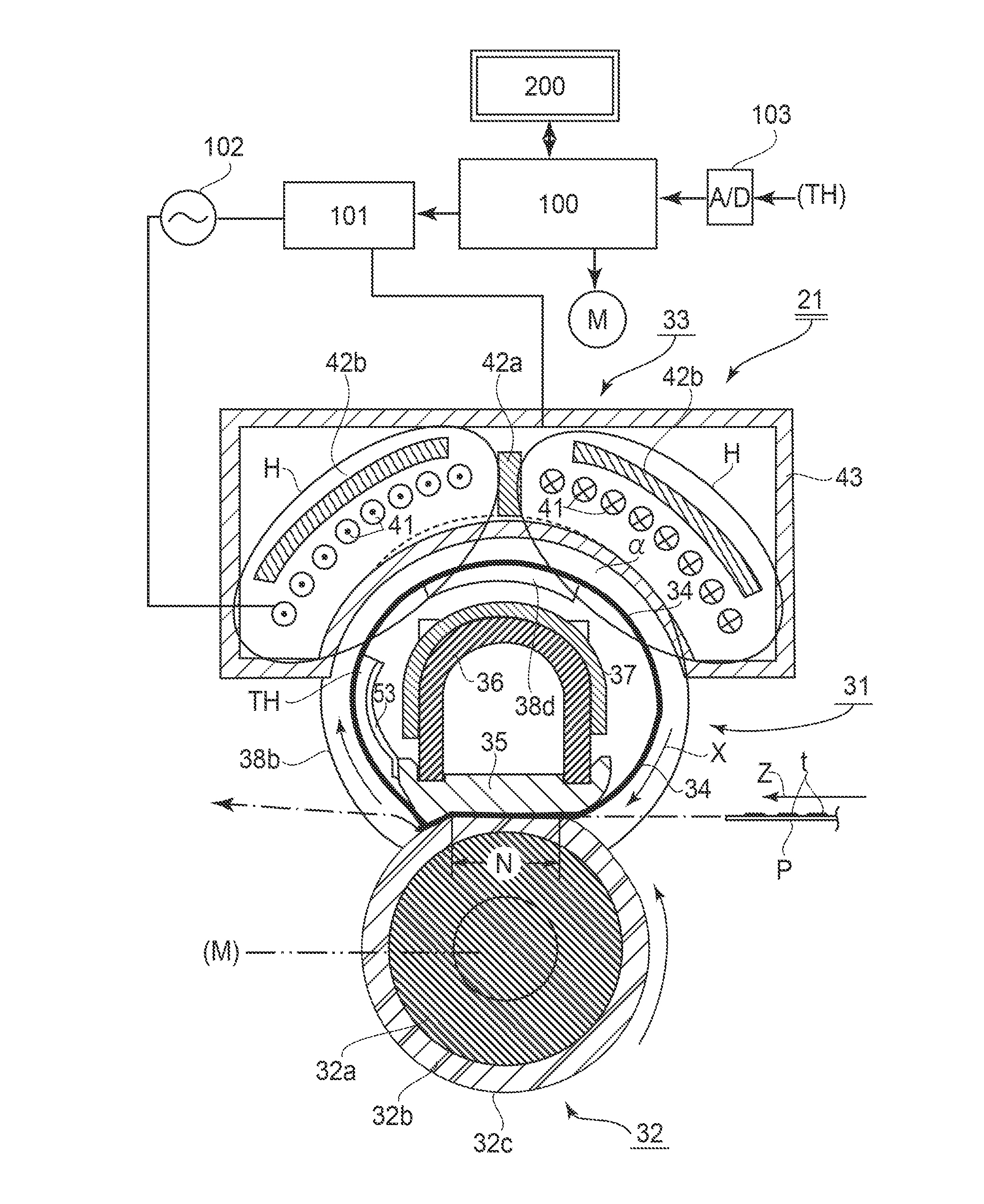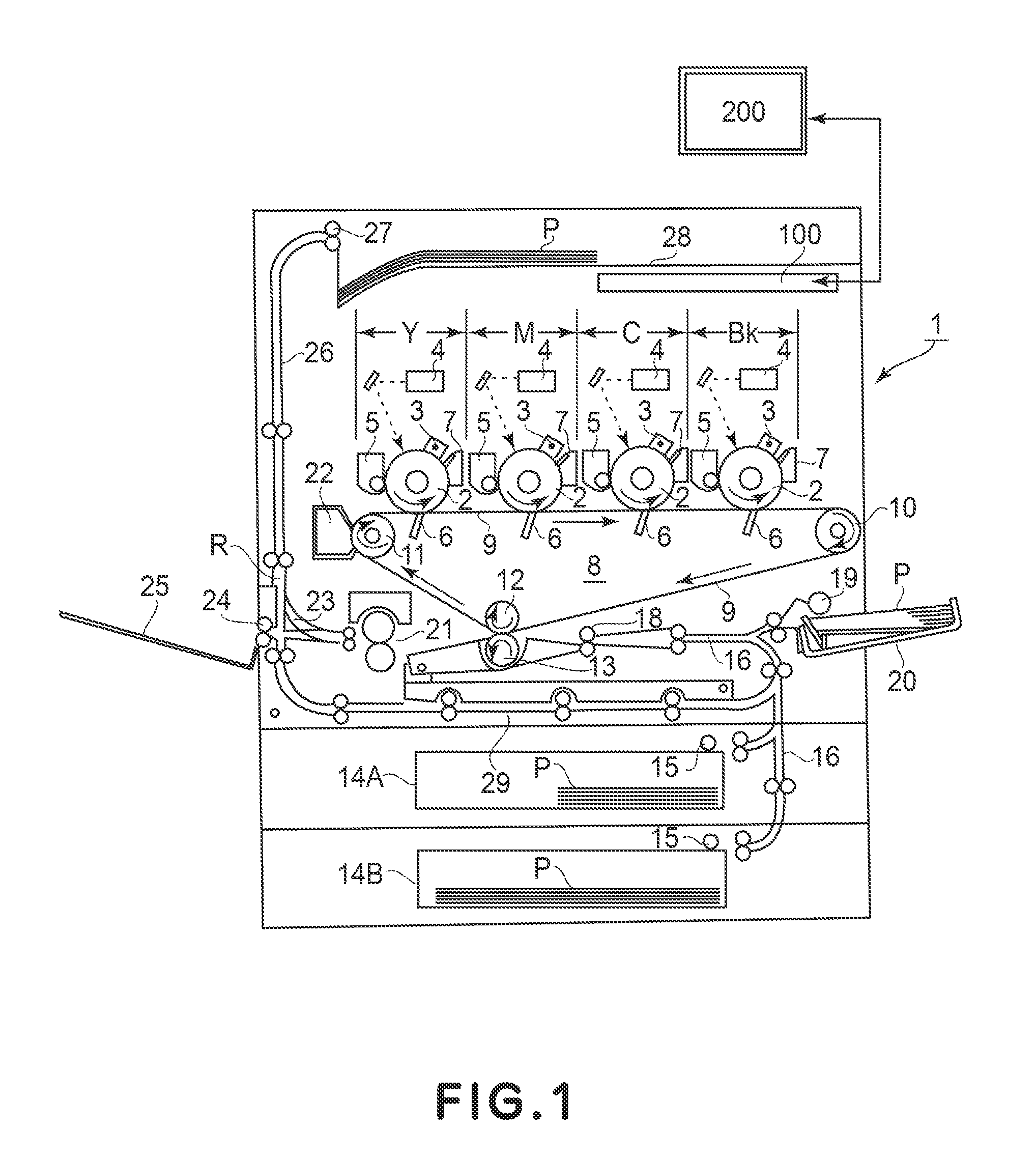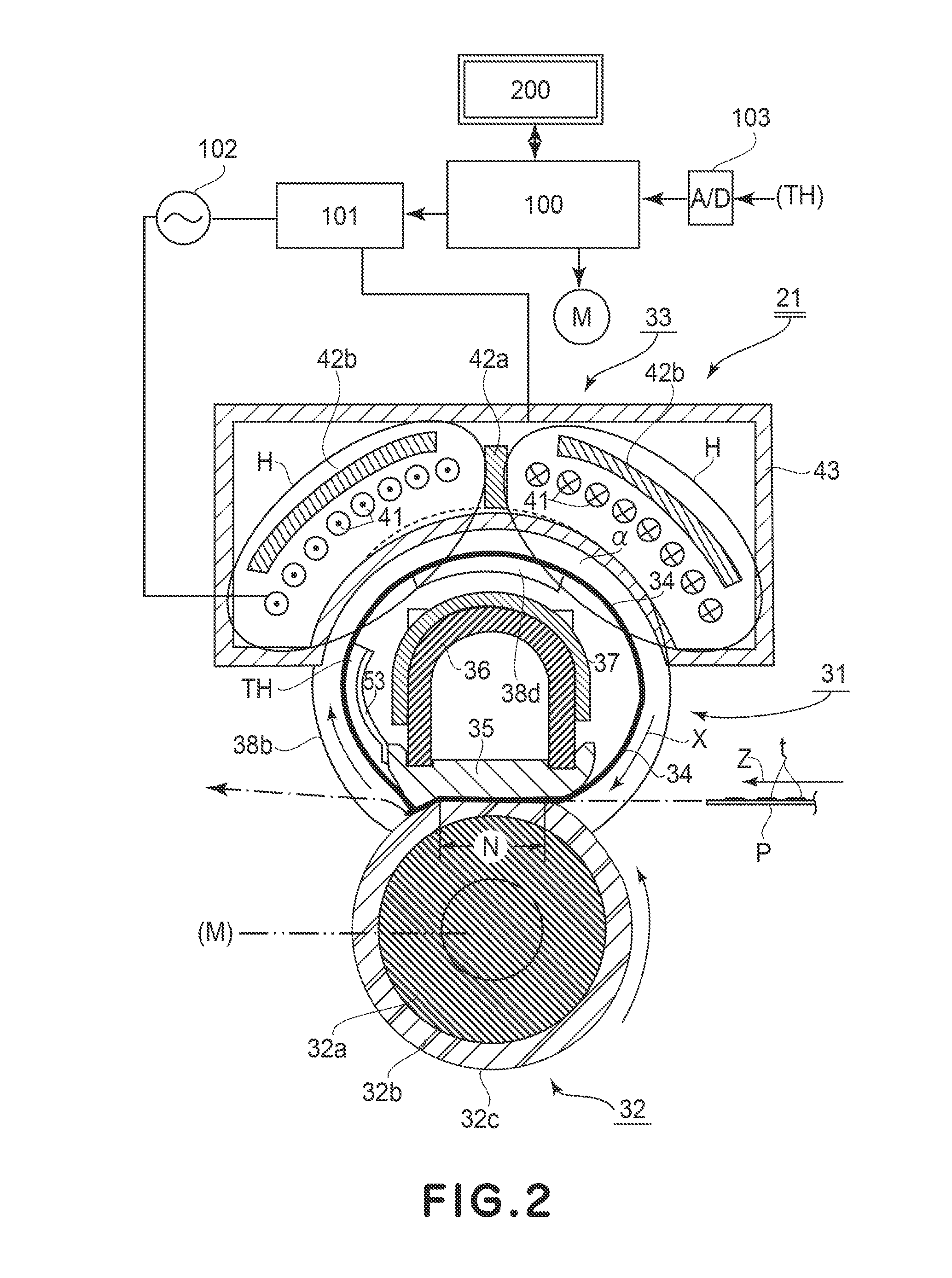Fixing device
a fixing device and a technology for forming apparatuses, applied in the direction of instruments, electrographic process apparatus, optics, etc., can solve the problems of increasing the size of the image forming apparatus, increasing the necessary electric power, and not being able to achieve a good fixing state
- Summary
- Abstract
- Description
- Claims
- Application Information
AI Technical Summary
Benefits of technology
Problems solved by technology
Method used
Image
Examples
embodiment 1
[0059]FIG. 1 is a schematic longitudinal view showing a general structure of an electrophotographic color printer 1 as an example of an image forming apparatus in which a fixing device 21 according to the present invention is mounted.
[0060]This printer 1 performs an image forming operation depending on image information inputted from a device 200 communicatably connected with a control circuit portion (control board: CPU) 100, thus being capable of forming a full-color image on a sheet-like recording material P and then outputting the full-color image as a hard copy.
[0061]The device 200 is a computer, an image reader, a facsimile machine or the like. The control circuit portion 100 as the control portion sends signals to and receives signals from the external host device 200. Further, the control circuit portion 100 sends signals to and receives signals from various devices for image formation on the printer side to manage image forming sequence control.
[0062]On the recording materi...
embodiment 2
[0272]In Embodiment 2, by using the toner having the melt viscosity characteristic as shown in FIG. 33, a verification of a relationship among the pressure, the single-color toner image density and the secondary color toner chroma was conducted in the same manner as in Embodiment 1. The softening temperature Ts and the incipient fluidization temperature Tfb of the toner measured by using the follow tester were as follows.
[0273]Ts: 65.0° C.
[0274]Tfb: 82.3° C.
[0275]Further, in this embodiment, the toner had the specific gravity ρ of 1.1 (g / cm3) and the weight-average particle size L of 6.0 (μm). As the recording material, the sheet (“CS814” (81 g / m2) mfd. by Nippon Paper Group Corp.) was used. Further, the toner amount per unit area of the single-color toner was 0.3 (mg / cm2). This toner amount per unit area was set at the value smaller than that necessary to cover the recording material.
[0276]Further, the fixing device used in this embodiment employed the fixing device constitution de...
embodiment 3
[0295]In Embodiment 3, a degree of pressure drop in the pressure distribution in the fixing nip and an image property will be described.
[0296]In the fixing nip, the toner temperature is gradually increased and reaches the highest temperature at the outlet portion of the fixing nip. With respect to the toner temperature, by applying a proper pressure at each portion, a good fixing image can be obtained.
[0297]However, when there a portion where the pressure is largely dropped in the fixing nip, the proper toner melting state is impaired and thus the image property is disturbed. Although also described in in Embodiment 1, e.g., as shown in the graphs of FIGS. 19 and 22, in the case where the high pressure state and the low pressure state are compared, the single-color toner spread ratio (amount) and the secondary color toner overlapping ratio are larger in the high pressure state.
[0298]This is because when the pressure is P and the toner viscosity is η, the toner deformation amount is...
PUM
 Login to View More
Login to View More Abstract
Description
Claims
Application Information
 Login to View More
Login to View More - R&D
- Intellectual Property
- Life Sciences
- Materials
- Tech Scout
- Unparalleled Data Quality
- Higher Quality Content
- 60% Fewer Hallucinations
Browse by: Latest US Patents, China's latest patents, Technical Efficacy Thesaurus, Application Domain, Technology Topic, Popular Technical Reports.
© 2025 PatSnap. All rights reserved.Legal|Privacy policy|Modern Slavery Act Transparency Statement|Sitemap|About US| Contact US: help@patsnap.com



